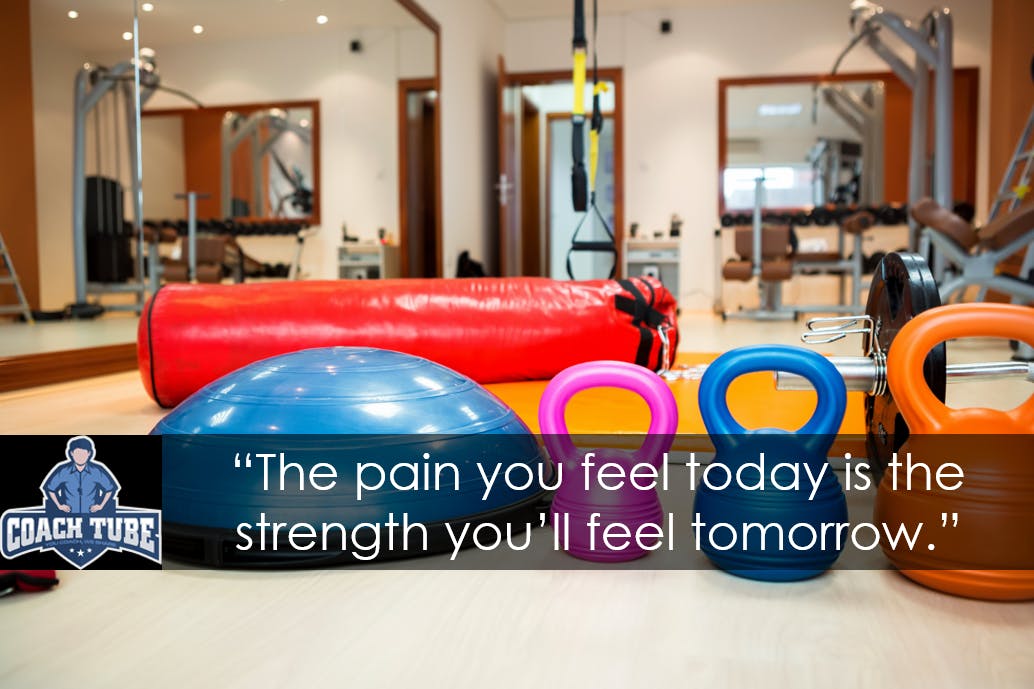Featured courses

THE IMPORTANCE OF WEIGHT TRAINING WORKOUTS FOR THE MULTI-SPORT ATHLETE
- By Chris
The multi-sport athlete has many things to consider when preparing to compete and developing a weight training program. Each athlete needs a program that will maximize athleticism for the current sport they are playing. When evaluating what weightlifting program to use, ask the following questions: What energy system is needed the most for my current sport? How important is power, strength, speed and agility? How much recovery time will the athlete have between workouts and competition? And when scheduling your workouts what are the time demands of this sport? Remember, each program should be as specific as it can be to the sport currently being played.
Here are twelve benefits to weight training that relate directly to your in-season game:
1. Injury prevention 2. Increase performance – muscular strength, power, endurance, speed, agility 3. Injury rehab 4. Increase stabilization 5. Increase flexibility 6. Improve attitude 7. Improve balance 8. Improve stability 9. Increase energy levels 10. Improve body composition 11. Increase mental toughness 12. Improve confidence level
Ideally, a program that incorporates most, if not all, of these benefits would best equip you for success in a variety of sports. A tailor made workout that meets the needs and demands of the sport you are currently playing should be employed for the duration of the season.
Two Killer Weight Training Strategies
For the purpose of this article, I recommend one of the two following strategies when setting up your weight training program. First, you can apply a general workout that uses 5 or 6 basic lifts to meet the power, strength, flexibility and stability needs that most sports require. Second, a workout that employs push-pull exercises, training the core and functional exercises that are specific to the sport you are currently playing. Also, this type of workout can create a variety of exercises so that boredom does not become an issue. Third, a rotation of the first two strategies; this will add diversity to your program and force your body to adapt to different training stimuli. This will produce tremendous results. Whichever strategy you choose make sure you are adequately overloading to the body part you are training.
The following list of what to add and what not to add to your workout will make it more efficient and productive regardless of the type of program you choose to follow. Your body will adapt to the specific training that you provide it so, be careful how you train because that is precisely how you will develop.
Weight Training Do’s
1. Perform Core Exercises. All sports require a strong and stable hip and torso area for absolute body strength and protection and are therefore, essential for all training programs. This area is known as the core, or foundation, of the body. Denying training to this part of your body, is neglecting the central part of where all of your sports movements originate. 2. Perform Push-Pull Lifts. – Lifts like the bench press, lat pull downs provide the push/pull effect. When performing one right after the other, or superset, greater amounts of work can be performed in a shorter period of time. 3. Perform Functional Exercises. Functional training exercises train your muscles to perform as they would on the field or court. These training movements mimic particular movements in sports and can have tremendous carryover to your sport. Make sure you don’t perform a sports skill with heavy overload, this will lead to faulty mechanics in your skill and can cause much more harm than good to your game. 4. Perform Strength and Power Exercises. Strength lifts such as the deadlift, bench press and squat and power lifts such as the push press and hang clean can provide the basics needed for all sports.
Weight Training Don’ts
1. Don’t Perform Plyometric Exercises In-Season. Keep plyometric exercises to a minimum if you are currently playing a sport that is dynamic in nature, such as football or basketball. The combination of these two will lead to excessive wear and tear on the body in the form of overtraining, decreased athletic performance and injuries. 2. Don’t Perform Single Joint Exercises. There are NO movements in sports that are limited to only one joint. Movements occur at multiple joints and in more than one plane. So, the benefits of performing multiple joint, compound body movements in your workout program will transfer more positively to the sport you are playing. 3. Don’t Use Exercise Machines. Machines isolate muscle groups and do not allow for other body parts to act synergistically. Stick to free weights, medicine balls, kettlebells, exercise bands, stability balls, body weight training etc., that simulate real life and recruit larger muscle groups.
This article is written by Rusty Gregory of Forte Fitness. Rusty is a an Austin personal traineriner with 25 years of experience after earning his Masters degree in Kinesiology from the University of Michigan. Rusty also serves as a highly valued consultant to Austin basketball trainer (and Coachtube.com co-owner) Chris Corbettbett. He is a Certified Strength and Conditioning Specialist (CSCS) with the National Strength and Conditioning Association (NSCA) as well as a Certified Wellness Coach. Rusty is also the author of the following books: Self-Care Reformform & Living Wheat Free For Dummiesmies.
Note: The content in this article should not be used for medical advice, diagnosis or treatment. Consult with your healthcare provider about your specific health needs.
